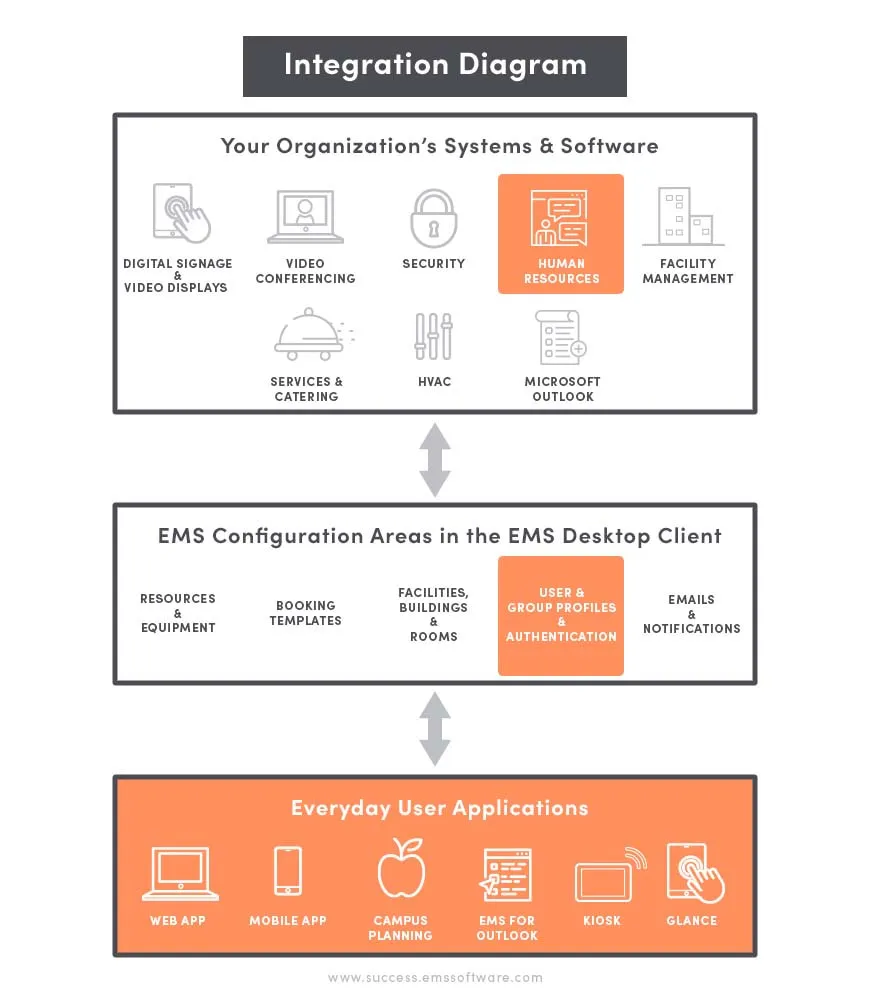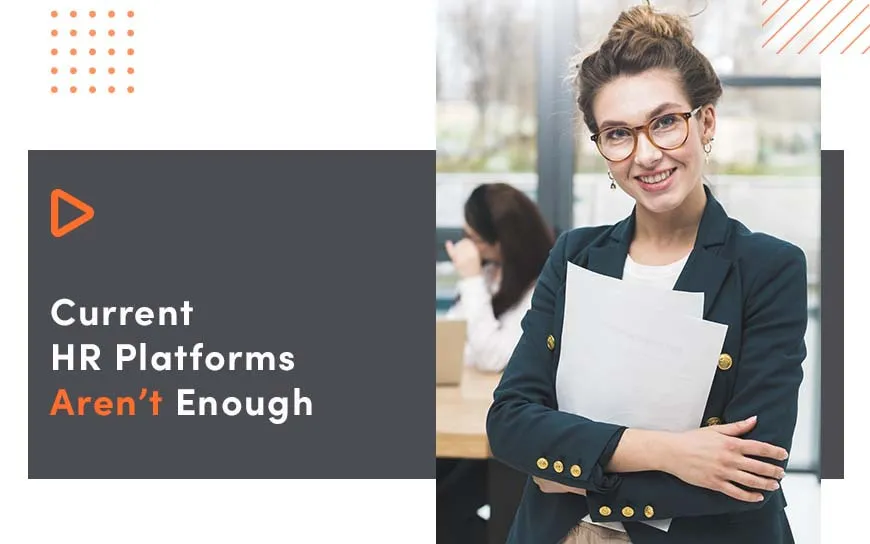A Human Resources Information System (HRIS) or a Human Resources Management System (HRMS) are two names for a similar technology designed to conduct Human Resources activities and process electronically by intersecting Human Resource and Information Technology through HR software.
In simpler words, HRIS is a way whereby using HR software, businesses (Small or Large) can take care of several activities, including those related to human resources, accounting, management, employee performance management and payroll. HRIS helps businesses plan their HR cost and manage HR activities more effectively without allocating too many resources.
In most conditions, HRIS systems help businesses increase efficiency by making the proper and efficient HR decisions. The decision is based on quality, which increases both the employees' and the managers' productivity, which ultimately results in higher returns.

As mentioned earlier, HRIS is an intersection between HR and IT through an HR solution.
In this article, you will learn:
- One toolkit and HRIS integration with core HR activities.
- Benefits of HRIS Software for HR management.
- Why current HR Platforms aren’t enough?
- What to know before Integrating HRIS (Internal and External Factors)?
- How should small businesses proceed with HRIS integration when the budget is insufficient?
What is HRIS Integration?
A business that uses a Human Resource System or HRIS, employees, and departments profiles or ‘Accounts’ may exist there. The toolkit eliminated the double-entry of any information by synchronizing HRIS and EMS on a chosen frequency. With this toolkit's help, businesses can easily automate the creation, update, and de-activation of user or group accounts in the EMS. Any user of HRIS with admin rights can automatically transfer any selected records to a tagging database and then update the appropriate tables in the EMS. By using HRIS, you can save time and add an extra layer of security. You can also enable the creation, maintenance, and de-activation of user and group accounts from an outside data source.

Now, we come on to the stage of discussing the benefits of a HRIS system. Why does a business need HRIS Software? How can HR software solutions be integrated with core HR activities and other department activities by simply one toolkit?
Why Your Business Needs HRIS Software?
Investing in integrating any software or platform in a company requires resources and time. A business needs to know the situation which is favourable for integration or not. Every case is different, and not all of them can yield returns on the investments. So, a business should research if they need or do not need HRIS integration. Some of the circumstances where a company might need HRIS integration are discussed below.
Current HR Platforms Aren’t Enough.
Nowadays, you have so many HR platforms that it becomes confusing who delivers what features. We have HRIS, HRMS (Human Resource Management System), and HCM (Human Capital Management). Each has been defined vaguely by the vendors most of the time, and their functionality is different.

HRIS comprises more functionality compared to any other HR platform. It includes features like benefits administration, recruiting, and compensation management. If your current HR toolkit lacks these features, then your business needs the integration of HRIS.
Suppose you have already implemented a separate system for your other extended HR processes (payroll and benefits), and it would be difficult or unfeasible to completely switch to a suite that covers all your HR activities. In that case, your company is a good candidate for integration.
The Best-of-Breed Route for your Company
There are benefits of fully ready-made HR platforms such as data access, 360-degree visibility, and other perks that create a unified, holistic environment. But it doesn’t mean that integrating all-in-one software is beneficial for your organization. It is also possible that your business nature demands separate applications from a range of vendors that fit better with your business strategy, processes, and architecture.
A specialized tool offers deeper functionality in its area of expertise. If you choose a separate tool for each HR process, it means you get the best of each. Let’s say you choose an HR tool for payroll, time and employee data management. Then it would give more benefits, rather than going for a one-in-all platform.
Read also: What Is Human Resources Software?
The industry has shifted as bigger vendors such as SAP and Oracle acquire best-of-breed solutions that let them sell HR suites without sacrificing deeper functionality. But that doesn’t guarantee that each module in a vendor’s suite will reach individual point solutions' standards. As always, use your company’s requirements as a barometer to measure what you need to accomplish and how best to do the work.
Thanks to APIs, apps, and an increasing emphasis on integration standards, piecing together your suite of HR applications isn’t as hard as it used to be.
However, you still have to put in the work of implementing and running each system, along with integrating them with your HRIS for greater cohesion.
Bottom line: List down your company’s priorities first, before making any decision.
If you have the budget to integrate HRIS

Suppose you are a small business with a tight budget and need several functionalities by integrating HRIS. Your budget is not enough to incorporate a single suite of integrated HR tools. Or, maybe you already have HR systems in place and need to connect them but don’t have the budget to do a massive upgrade to a vendor that does it all.
In both scenarios, HRIS integration is a good option. By integrating HRIS and HR tools, you can get the benefits from both worlds without exhausting your budgets.
Small businesses should first assess their specific HR requirements and prioritise the HRIS features that are essential for their operations. Exploring cost-effective, cloud-based HRIS solutions can offer scalable and affordable options. It's advisable to consider open-source HRIS platforms, which may provide customisation flexibility at a lower cost. Engaging in a phased implementation can help spread the costs over time, allowing for budget adjustments and prioritisation of key functionalities. Finally, seeking advice from HRIS vendors or consultants about budget-friendly options can uncover opportunities for discounts or financing plans tailored to small business needs.
Try our developers.
Free for 2 weeks.
No risk. Just results. Get a feel for our process, speed, and quality — work with our developers for a trial sprint and see why global companies choose Selleo.
What are the Benefits of HRIS Software?
HRIS provides a centralized database that stores applicant tracking functions, talent management, onboarding, employee information, compensation for managers and employees, benefits administration, time-tracking, and so much more. It’s also the hub for your employee database with up-to-date information on your org’s hiring trends and employee retention.
When human resource information systems has properly integrated with HR software and the company's IT, it creates some beneficial side effects. Here are four of them:
Increase Overall Productivity

By automating employee time tracking, benefits management, payroll and finances, compensation, and application tracking, a company can save a lot of time from wasting in manual processing. It helps improve data security and accuracy as well as saves money on hiring extra HR executives. Just take one example of time management; with a time-management tool, you can manage time, and attendance tracking, employee benefits management, vacation requests, and accruals workflow can be quickly entered one time. It eliminates time wasted in sending forms to HR for manual processing. Employees can update their contact information, benefits choices, or time-off requests directly in their employee portal.
Improve Operational Efficiency
HRIS simplifies a company’s HR department to human capital management, track, update and report on employee data. Most HRIS solutions even allow the uploading of hard copy forms to PDF images within the employee’s digital file. It also lets employees upload electronic signatures on their important documents.
Efficient Decision Making
While HRIS is streamlining productivity, that enables the HR team to do more strategic work to help improve business. Jeni Fahy, a contributing author at Sapling HR, said:
Strategic People Ops focuses on maximizing employee lifetime value, employee wellbeing, productivity, and most importantly, driving the organization forward. HRIS reports can be easily created and shared with managers and executives to help them make informed and timely decisions.

Reports on employee off-boarding trends, for instance, can lead to direct employee retention efforts and plan for future company growth.
Improve Employee Engagement and Satisfaction
HRIS can promote better employee engagement. A user-friendly employee portal allows employees to navigate their compensation choices, review and update their personal information, easily request leaves, and receive approval. The new talent can learn about the company culture. Employees don't need to waste time calling and visiting HR for paperwork. It helps reduce the frustration of wasting time for HR appointments. It also plays an integral role in making the onboarding process stress-free for new employees.
Key Factors to Successfully Implement a Human Resource Information System
Taking out the most advantages from HRIS, HR professionals need to carefully plan how it will be implemented into their organization to make a smooth transition with as little disruption as possible to the organization’s daily business activities. Here are several factors to consider when implementing HRIS.
What Internal Factors Needs To Be Researched Before Integrating HRIS
#1: Involve Every User or Department to Gather Requirements
Successful implementation of HRIS depends on the coordination among the management and all staff. HR professionals must ensure that they communicate the benefits of HRIS to all organization members and across all departments. May it be Finance, Payroll, IT, Recruiting, and Benefits, in addition to consulting senior management, everyone should be in the loop. The usage of HRIS will differ for each department. HR should also consider tailoring communication and implementation of the system from department to department.
# 2: Risk Assessment
Before implementing the HRIS, the HR department should consider any potential stumbling blocks. Every involved personnel in every department should give the acknowledgement before the integration. If not, there might be chances that some staff members or departments might face resistance to using HRIS as it might not be comfortable for them to use after integration.
Moreover, HR should also be aware of any other barriers to a successful implementation. This may include a conflict in timing with the performance of different policies or initiatives in the company.

HR may also want to assess how much time putting the system into place will take and plan the backup to perform the activities so that business won’t be hindered due to the integration.
# 3: Right Methodology of Implementation
Implementation methodologies involve providing complete details of what is required and expected when crafting a project plan and the project plan itself delivers the methodology. HR professionals should conduct proper research, coordinate with other staff, and gather their requirements to develop a well thought out approach to prevent rework in the long run.
Picking the right methodology is the key to developing a structured implementation approach. The wiser decision is to review the accepted methodologies before finalizing the best approach that is most appropriate to the company’s needs. In choosing the best approach, HR can also concern the software vendors for advice as they are uniquely experienced in implementing their system within various companies.
# 4: Overview of the Business Plan and Defined Requirements
Performing a business process overview and mapping out data sources, interfaces, and procedures with other companies' software is highly crucial. Doing so means that HR can better integrate their HRIS to work with other existing software and ensure compatibility.

# 5: Clearly Define Requirements
HR department and the company should plan out all the features that HRIS should have to perform the required functionality. HR personnel should understand the fundamentals of HRIS system, how its tools can help the company, and how it can fit within the broader HR technology ecosystem.
HR should know exactly about their current record management system and the current period and future data requirements. They should determine how the same data will be recorded, tracked, and retrieved after integrating HRIS. These requirements should be clearly defined to be configured to ensure each departments’ reporting requirements can be fulfilled.
# 6: Measuring Success after Integration of the HRIS Software

HR professionals need to define what success means for the company and how to measure it. They should make sure of a way to measure it post-integration and frequently in the future. If, for example, one of the company's goals was to reduce manual data entry by 20%, HR needs before-and-after data to know if the plan has been achieved.
External Factors That Need To Be Researched Before Integrating HRIS?
# 1: Cost of Integrating HRIS
The market is filled with many tools that promise to deliver the best features or those you required for your company. It is very important to consider evaluating the cost of integration with the expected ROI from the HRIS solution. If you cross your budget, it might be a harmful step for your business. Survey the market, evaluate vendors, and have a detailed meeting before making any final decision is very important.
# 2: Technical And Administrative Support
HR professionals should make sure that the vendor will provide customer service even after integrating the HRIS solutions. HR should add the clause in the contract that the vendor will provide overall support that ensures integrated systems are updated as changes are made to the individual programs.

Administrative and technical support means that the vendor will develop an employee support program with accompanying services to help employees at key points in the process, like when they have trouble logging in to a system or have questions during open enrollment.
Summary
If you need a vendor who can guide you before integrating HRIS and provide technical and administrative support for your company's HR software needs, you can surely consider Selleo. We have a solution - our team of experts will guide you on every step of your success.





